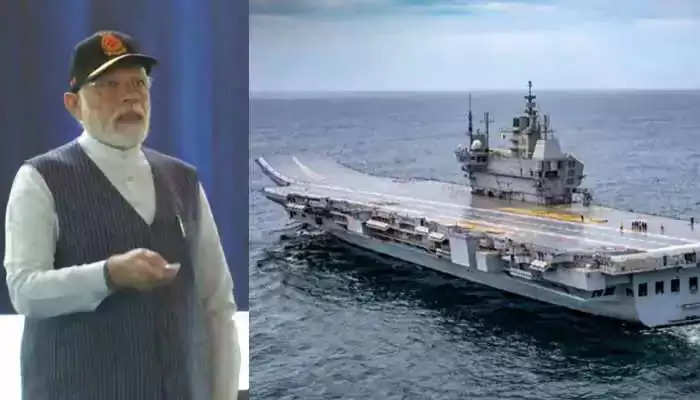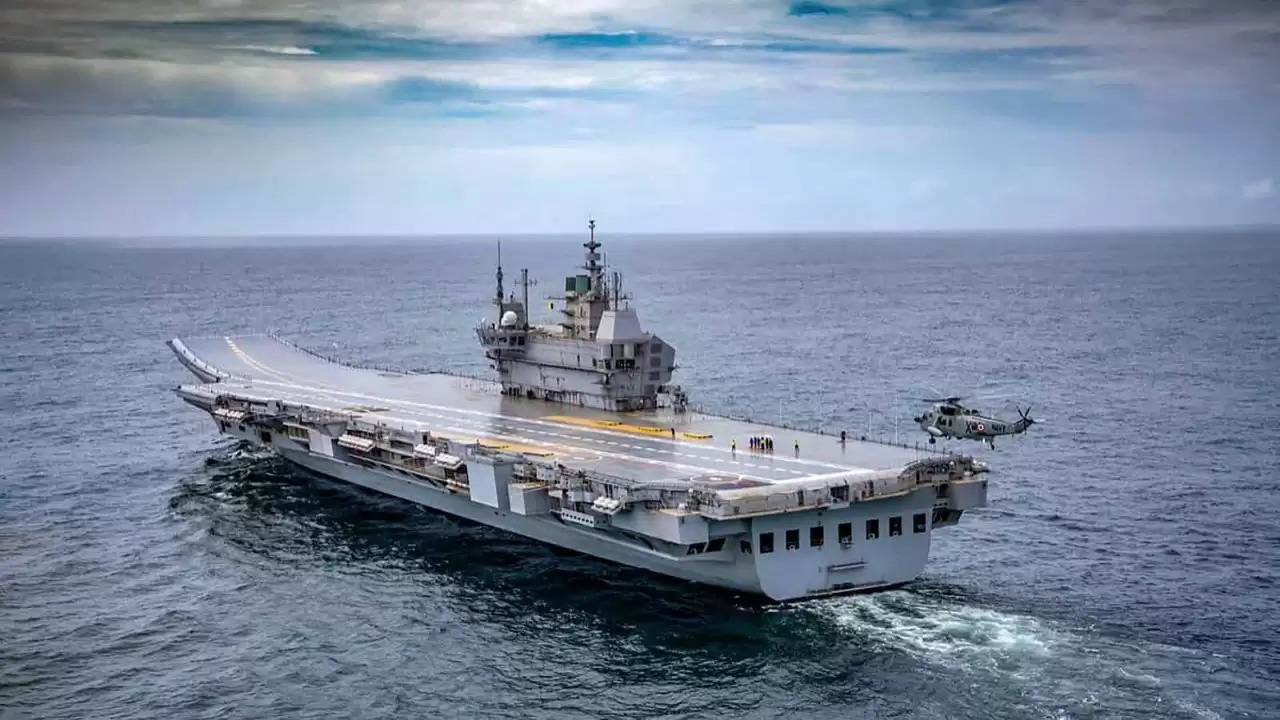INS Vikrant, First Indigenous Aircraft Carrier Inducted In Indian Navy

Today, the country's largest and first indigenous aircraft carrier, INS Vikrant, with around 2,200 cabins designed for approximately 1,600 crew members, was dedicated to the nation. Today, Prime Minister Narendra Modi commissioned INS Vikrant in Cochin, Kerala. It is the largest ship ever built in India's maritime history. Prime Minister Narendra Modi commissioned this indigenously built aircraft carrier with cutting-edge automation equipment at the Cochin Shipyard for Rs 20,000 crore.
At the launch event of the ship, the Prime Minister also unveiled the new naval flag, which will be in line with the rich Indian maritime heritage, leaving behind the colonial past.
Vice Admiral SN Ghormade, Vice Chief of the Indian Navy, had stated that INS Vikrant would help to ensure peace and stability in the Indo-Pacific and Indian Ocean region. He stated that the flight tests on the INS Vikrant will begin in November and be completed by the middle of 2023. He stated that for the first several years, the MiG-29 fighters would operate from the cruiser.

The commissioning of INS Vikrant will be a significant step toward India's defense self-sufficiency. With the induction of Vikrant into service, India will join a narrow club of countries, including the United States, the United Kingdom, Russia, China, and France, that have the potential to design and build an aircraft carrier in-house, as part of the Government of India's 'Make in India' policy. There will be tangible evidence of initiative.
The battleship was built with indigenous equipment and machinery manufactured by India's premier industrial houses, as well as more than 100 Small, Cottage, and Medium Enterprises (MSMEs). With the introduction of Vikrant, India will have two aircraft carriers in service, bolstering the country's maritime security.
The indigenous aircraft carrier, designed by the Indian Navy's Warship Design Bureau (WDB) and built by Cochin Shipyard Limited, a public sector shipyard under the Ministry of Ports, Shipping, and Waterways, is named after India's first aircraft carrier, 'Vikrant,' which played an important role in the 1971 war.
Vikrant is a word that signifies victorious and valiant. Formal steel cutting set the groundwork for the Indigenous Aircraft Carrier (IAC) in April 2005.
A special type of steel is needed to make aircraft carriers, which is called Warship Grade Steel (WGS). Taking forward the indigenization drive, the warship grade steel required for manufacturing the IAC was successfully manufactured in the country through Steel Authority of India Limited (SAIL) in collaboration with Defense Research and Development Laboratory (DRDL) and Indian Navy. After this the work of the ship's shell (framework) proceeded and in February 2009 the construction of the ship's pathan (nautal, keel) started, that is, the process of building the warship proceeded. The Pathan is the basic component at the bottom of the ship, with the help of which the entire structure is erected.
The first phase of the shipbuilding was completed in August 2013 with the successful launch of the ship. 262 meters long and 62 meters wide, INS Vikrant can cover a range of 18 nautical miles to 7500 nautical miles.
The ship has approximately 2,200 cabins, which are designed for approximately 1,600 crew members. It includes special cabins to accommodate women officers and sailors. The aircraft carrier, designed with a very high degree of automation for machinery operation, ship navigation and survivability, is equipped with state-of-the-art equipment and systems.
The ship has a complete state-of-the-art medical complex with latest medical equipment facilities including premier modular OTs (operation theatres), emergency modular OTs, physiotherapy clinics, ICUs, laboratories, CT scanners, X-ray machines, dental complex, isolation wards and telemedicine. Amenities etc. are included.
It is capable of operating an air wing consisting of 30 aircraft including indigenously built Advanced Light Helicopters (ALH) and Light Combat Aircraft (LCA) besides MiG-29 fighter jets, Kamov-31 and MH-60R multi-role helicopters.
